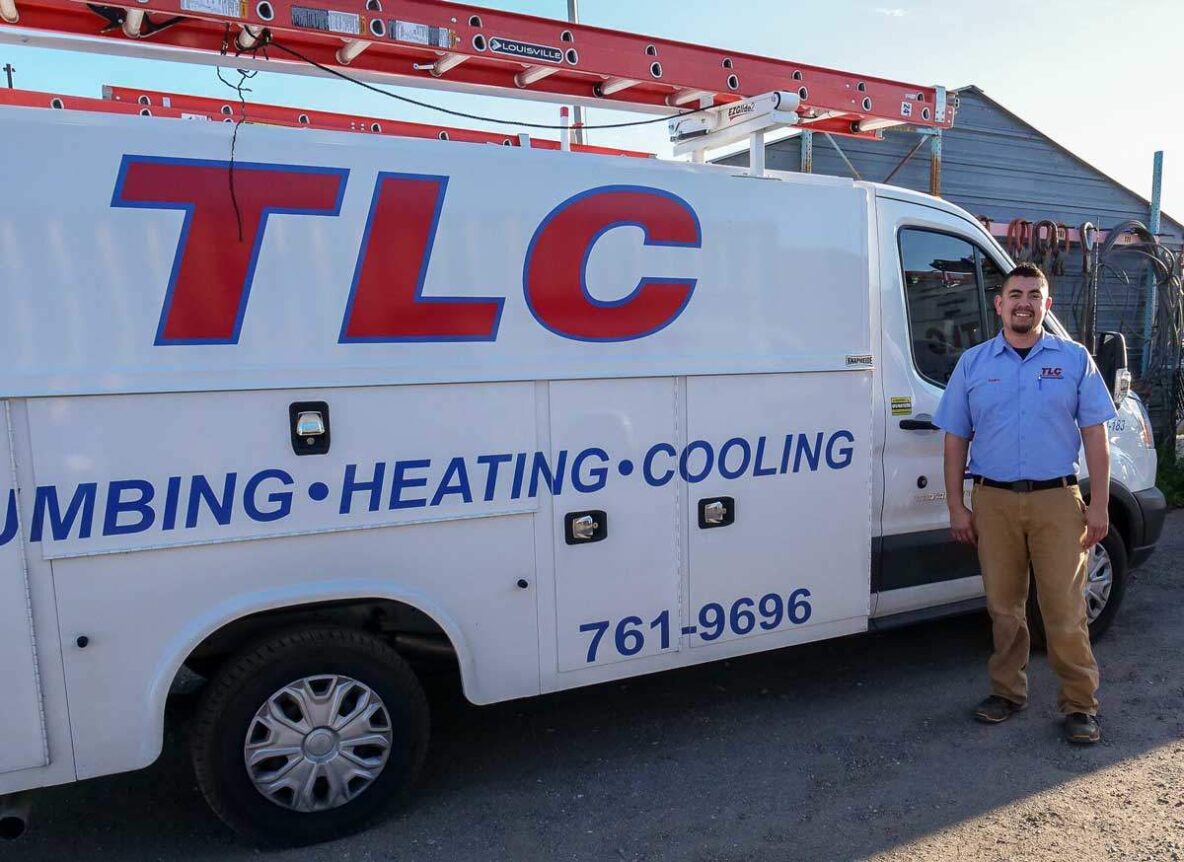Winter is coming, and even though New Mexico stays relatively mild, it still drops below freezing. It’s important to make sure your home is bundled up against the weather. Winterizing your home can be a daunting task, so we asked one of our top professionals, Keanu Alaniz, to share his best tips!
Keanu, Your Heating and Cooling Expert

Keanu is a true local! He was born and raised in the Albuquerque-Rio Rancho area. He’s familiar with New Mexico winters. He learned his love for the trades at a young age from his grandpa. He is currently a manager for our residential HVAC team. He holds his Journeyman Refrigeration and Gas-Fitters licenses as well as an EPA Universal Certificate. In the time he’s been with TLC, he has proven to be an invaluable member of our team!
Keanu and his wife, Faith, are raising their little boy August, whom they affectionately call Auggie. They are pretty much full-time parents, spending most of their free time with Auggie, taking him to the zoo, and playing with him.
Winterization Tips by Keanu with TLC Plumbing
Swamp Cooler Damper and Cover
Keanu says that the most important thing to do if you have a swamp cooler is to make sure that the damper is in place. The damper is a metal sheet that closes the vent leading from the swamp cooler into your home. If the vent isn’t covered, warm air will escape and make it hard to keep your house warm. It can also cause your energy bill to skyrocket!
You also want to put a cover on your swamp cooler to protect it from the elements and debris. If you don’t already have one, you can easily get one at your local home improvement store. All you need to know is the dimensions of the cooler.
Close Your Windows and Doors
If you use a swamp cooler in the summer, it’s normal to leave doors and windows open. But in the winter, they’ve got to stay closed. Open windows and doors allow the heat to escape, making your energy bill higher.
Don’t Completely Cover the Air Conditioner
You might think that since swamp coolers should be covered in the winter, so should your refrigerated air conditioner. It definitely seems logical, but you really don’t want to do that. Sometimes, a malfunction causes the air conditioner to turn on, even in the winter. If the AC is covered, it can cause serious damage!
You can still protect your air conditioner from debris and the weather. Cover the top of it with a piece of plywood board, but leave the sides exposed. That way, debris won’t get inside of it, but if it turns on, it won’t hurt anything.
Change the Furnace Air Filter
We always recommend that you get a furnace inspection before you crank on the heat, but if you decide not to get one, you still need to change the air filter. This is something you can easily do yourself, but do it before you turn on the furnace. After that, Keanu suggests that you check the filter every three to four months. Check it every month if you have pets.
You can tell it’s time to change your filter if it’s no longer a clean and white color. When filters need to be changed, they become discolored and have a grungy gray or brown hue. Keanu says that if it’s faded at all (no longer white) it’s time.
Pro Tip: Keanu shared that one of the best places to pick up furnace filters is New Mexico Air Filter. It’s affordable, and they make special sized filters if you need them. Just take your old filter in so they can match it.
Open All the Vents
It might be tempting to completely close off the vents in rooms you aren’t using or the ones that get too warm. Keanu advises against this because if 50% of the vents are closed, the furnace is likely to overheat and cause serious damage. Make sure all the vents are open at least a quarter of an inch. If you are concerned about hot spots in your house, duct balancing can help.
Install a Carbon Monoxide Detector
Carbon monoxide is the silent killer. Keanu tells a story of a time he came upon a customer who had been poisoned by carbon monoxide. He was able to save the man’s life but it was a close call! The whole situation could have been avoided if there had been a carbon monoxide detector in the house. Luckily, carbon monoxide detectors are inexpensive and easy to install. Keanu’s advice? Just get one! You can find them at any home improvement store.
Change the Thermostat Batteries Before Calling for Service
Keanu says that a great way to save a few bucks is to change the batteries in your thermostat yourself. If you are having a professional start up your furnace for winter (which you should!) change the batteries before your service technician arrives. It saves you from paying a professional to do something you can easily do yourself.
The bottom line is that getting your home ready for winter doesn’t have to be overwhelming or hard. Now that you know Keanu’s pro tips, you can save yourself some money by winterizing your home yourself. Of course, Keanu and TLC Plumbing are always here to help if you find that you need it! Ask us a question or give us a call at 505-761-9696.

